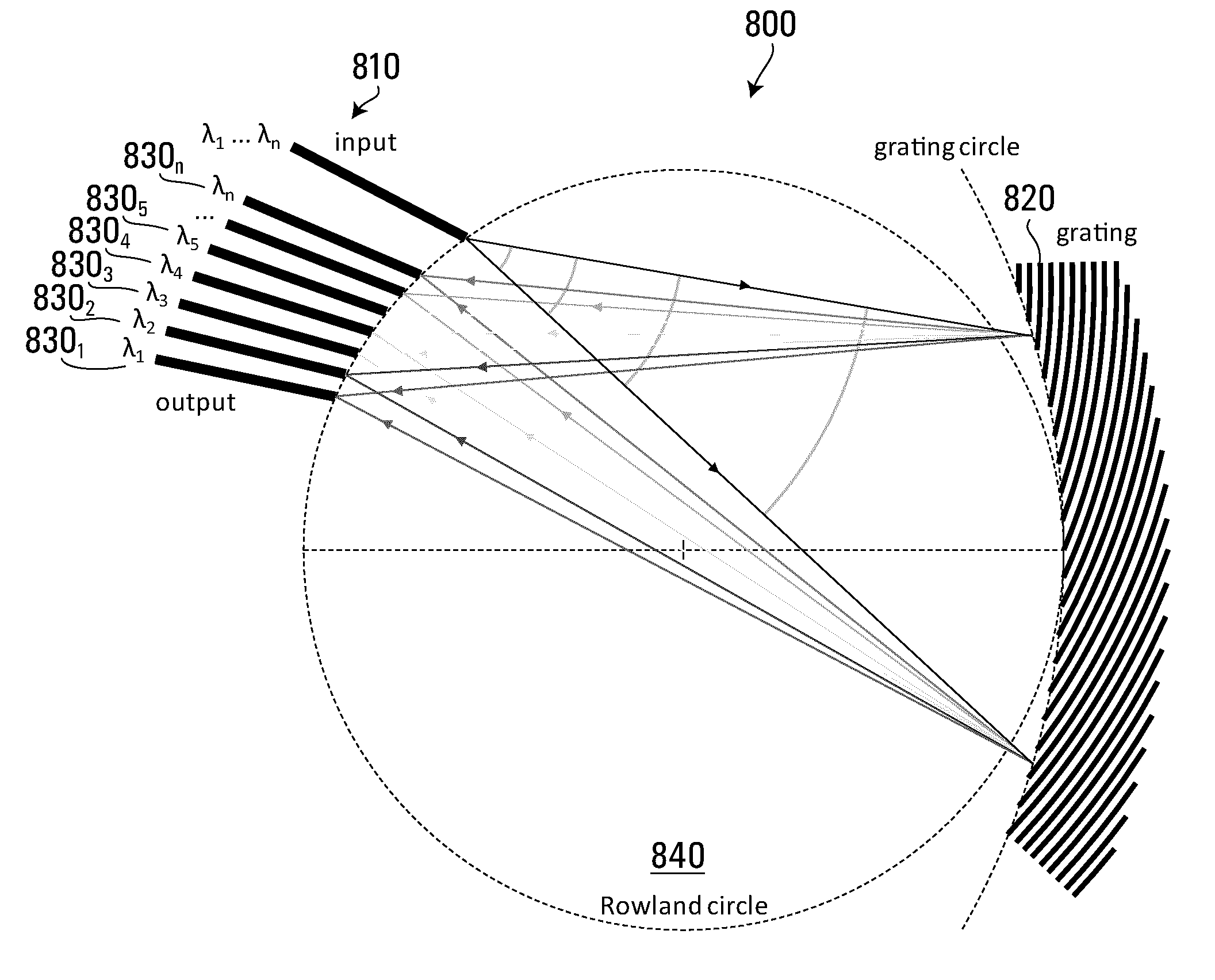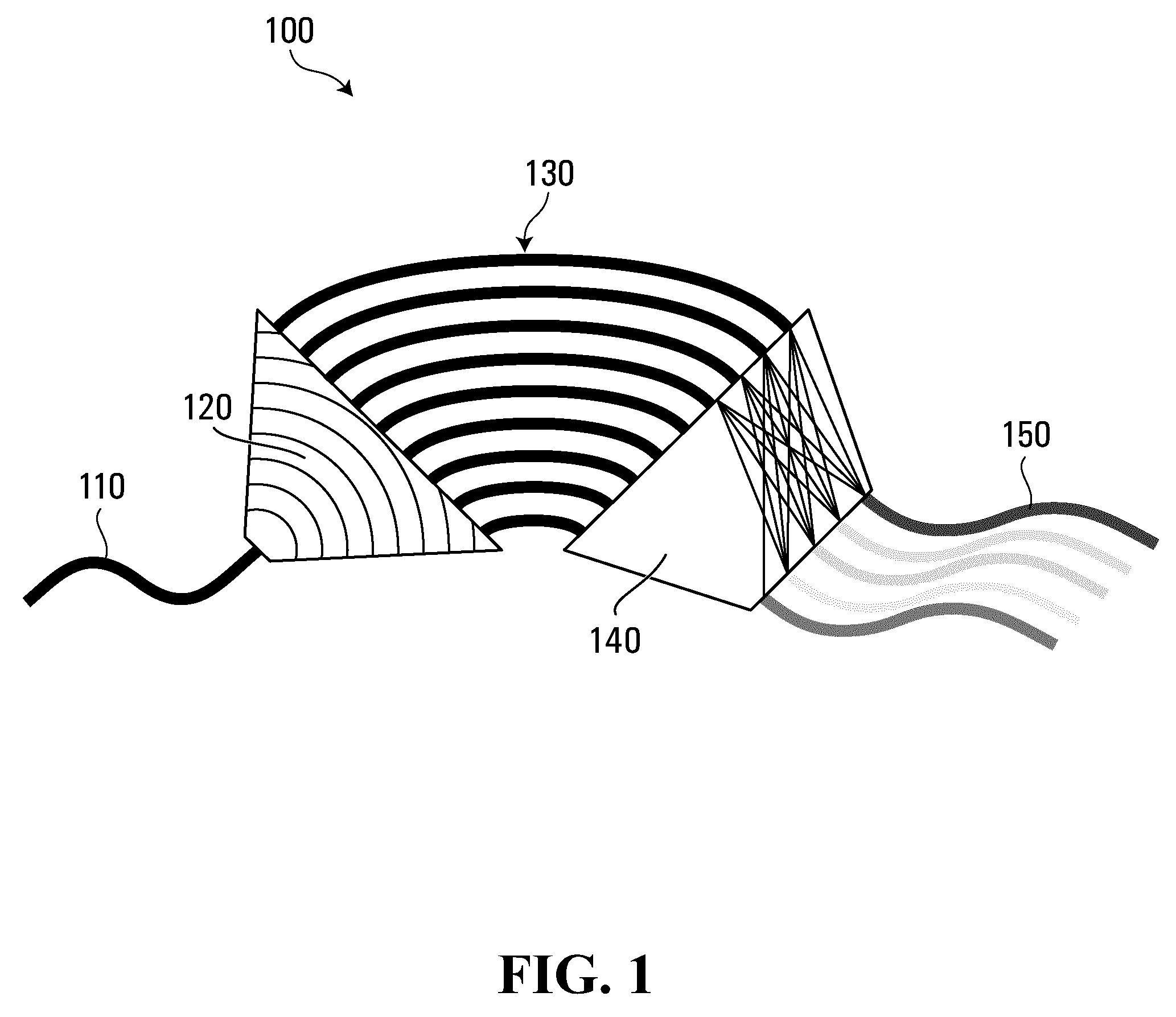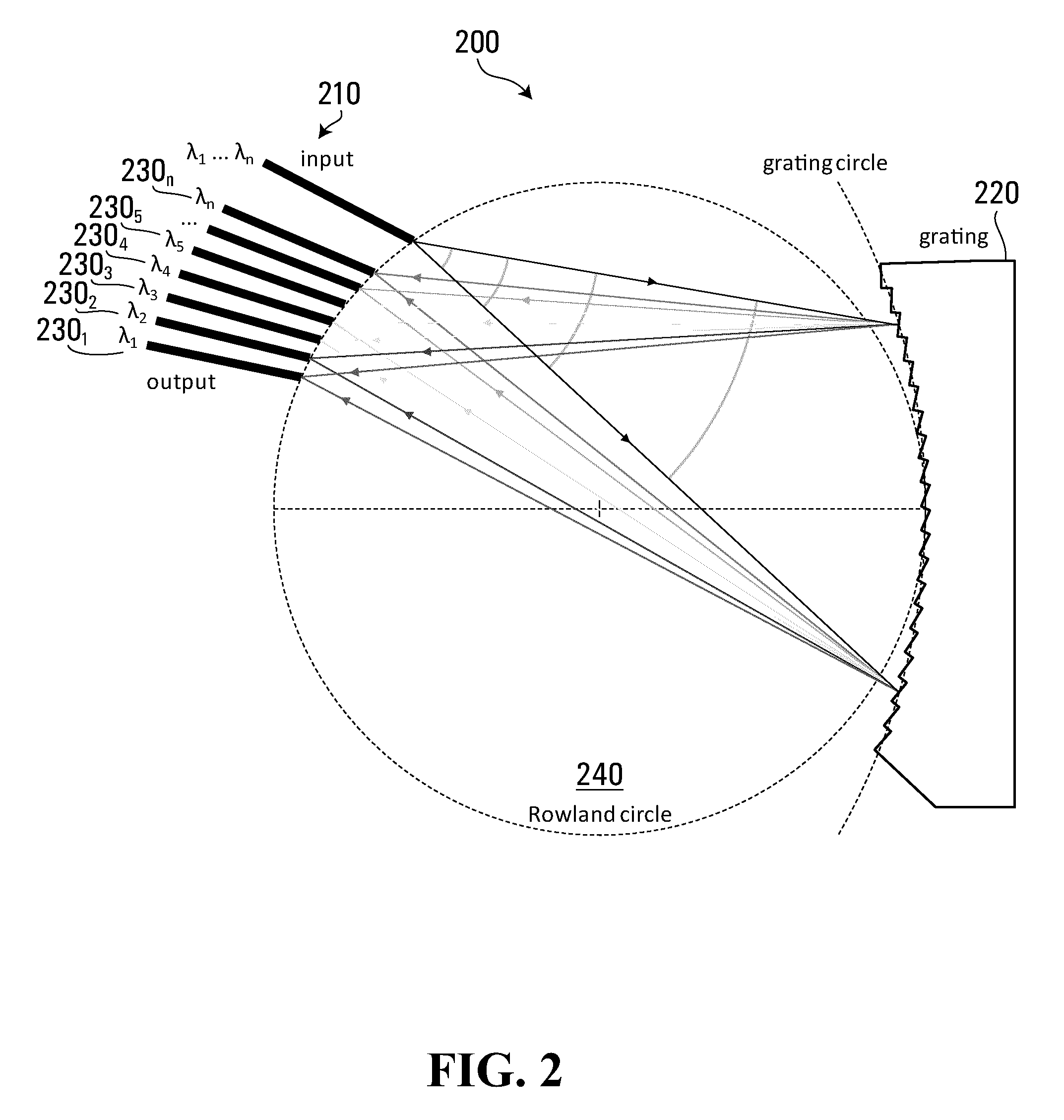High efficiency mono-order concave diffraction grating
a diffraction grating, high efficiency technology, applied in the field of diffraction gratings, can solve the problems of large footprint of cascaded mach-zehnder filters compared to arrayed waveguide gratings, large footprint of each new technique, and inability to meet the requirements of light efficiency coupling, etc., to achieve the effect of maximizing light efficiency coupling
- Summary
- Abstract
- Description
- Claims
- Application Information
AI Technical Summary
Benefits of technology
Problems solved by technology
Method used
Image
Examples
Embodiment Construction
[0120]Some aspects of the invention deal with using a concave diffraction grating, in which the classical grating is being replaced by a new configuration. In some embodiments, metallization is avoided by replacing the metalized grating by a curved dielectric mirror. This eliminates the difficulty of deposition and enables a grating approaching 100% efficiency. It also reduces sensitivity to polarization. In other embodiments, deep etching is replaced by a shallow etching or other techniques that modify the index of refraction (doping, etc), possibly making it even easier to fabricate. In a further embodiment, metal is used in thin lines, not in a single piece, and has less polarization sensitivity than a single piece metal grating because there are substantially no facet edges. Consequently, present limitations of concave diffraction gratings can be substantially alleviated, resulting in a high-quality device for WDM devices and micro-spectrometer.
[0121]Some embodiments of the inve...
PUM
 Login to View More
Login to View More Abstract
Description
Claims
Application Information
 Login to View More
Login to View More - R&D
- Intellectual Property
- Life Sciences
- Materials
- Tech Scout
- Unparalleled Data Quality
- Higher Quality Content
- 60% Fewer Hallucinations
Browse by: Latest US Patents, China's latest patents, Technical Efficacy Thesaurus, Application Domain, Technology Topic, Popular Technical Reports.
© 2025 PatSnap. All rights reserved.Legal|Privacy policy|Modern Slavery Act Transparency Statement|Sitemap|About US| Contact US: help@patsnap.com



